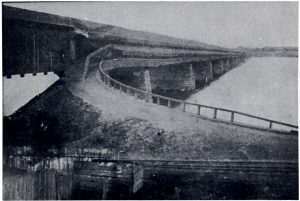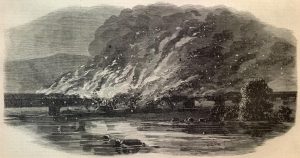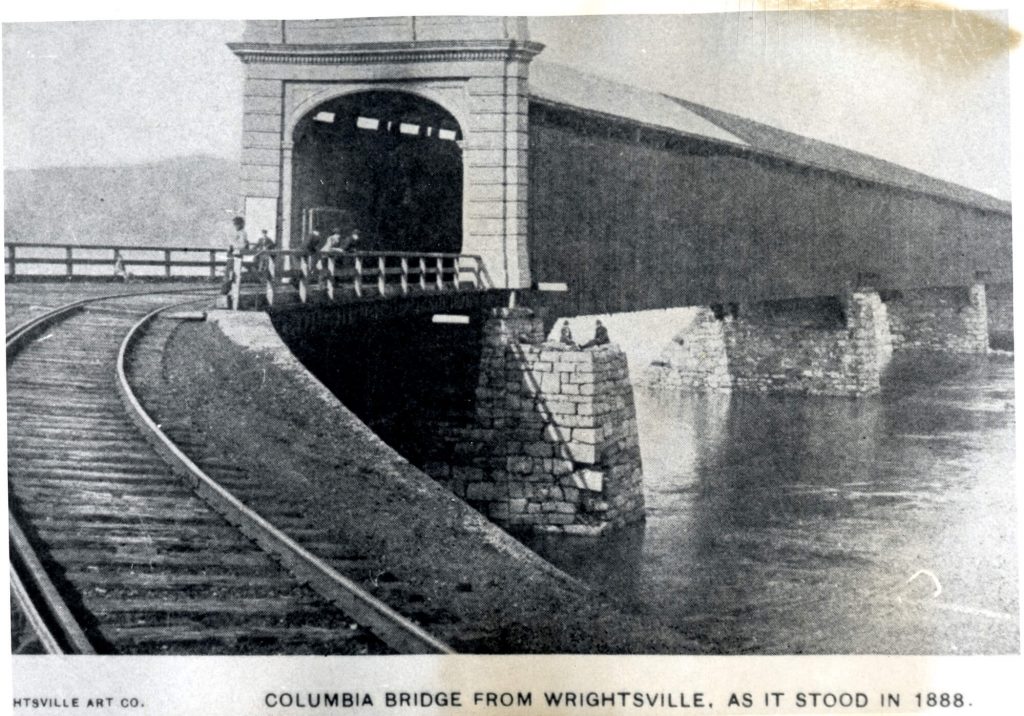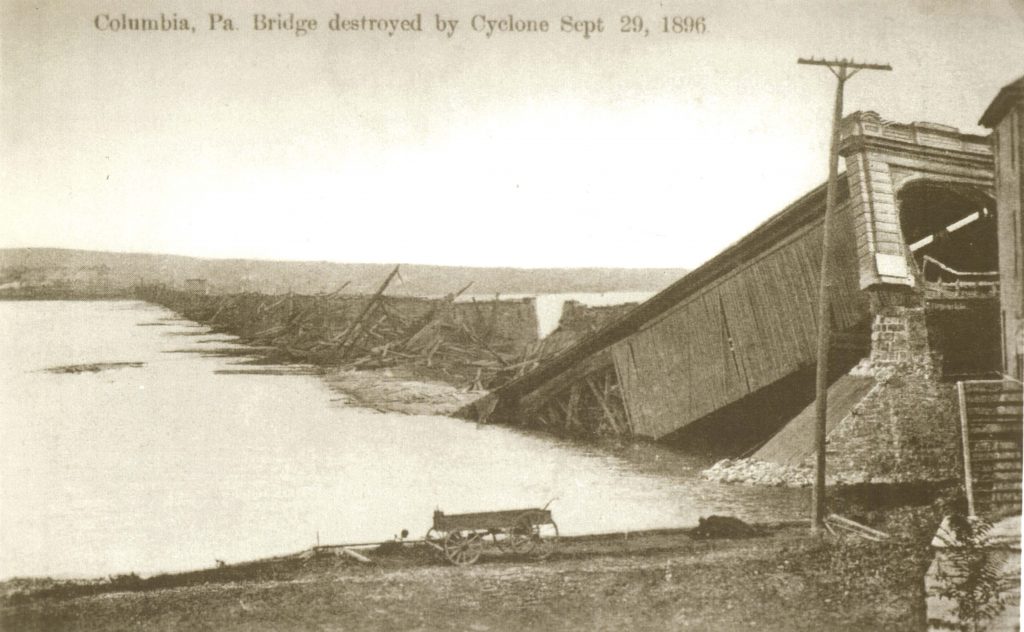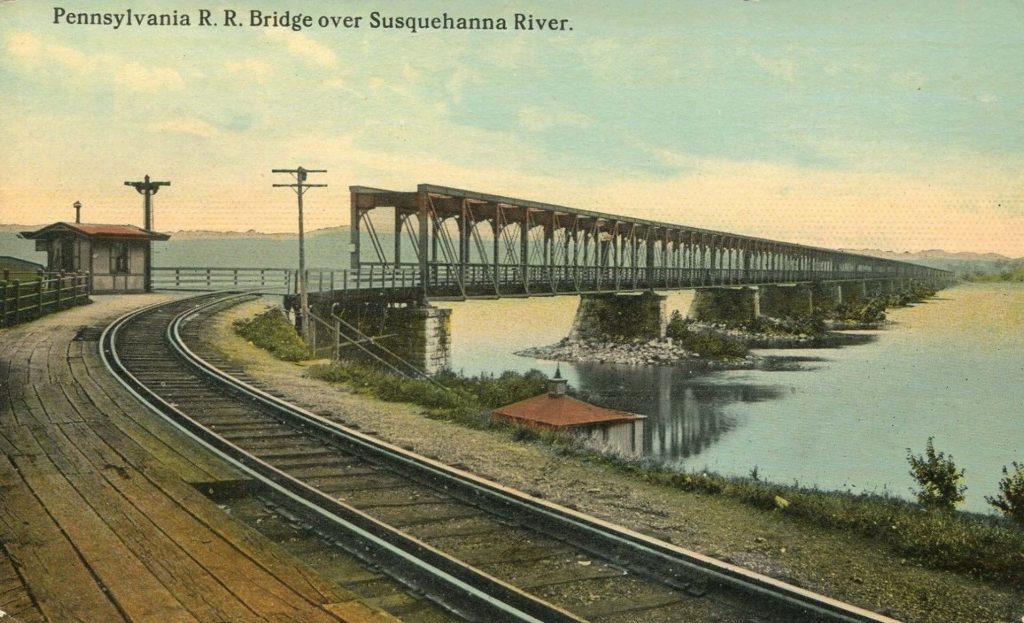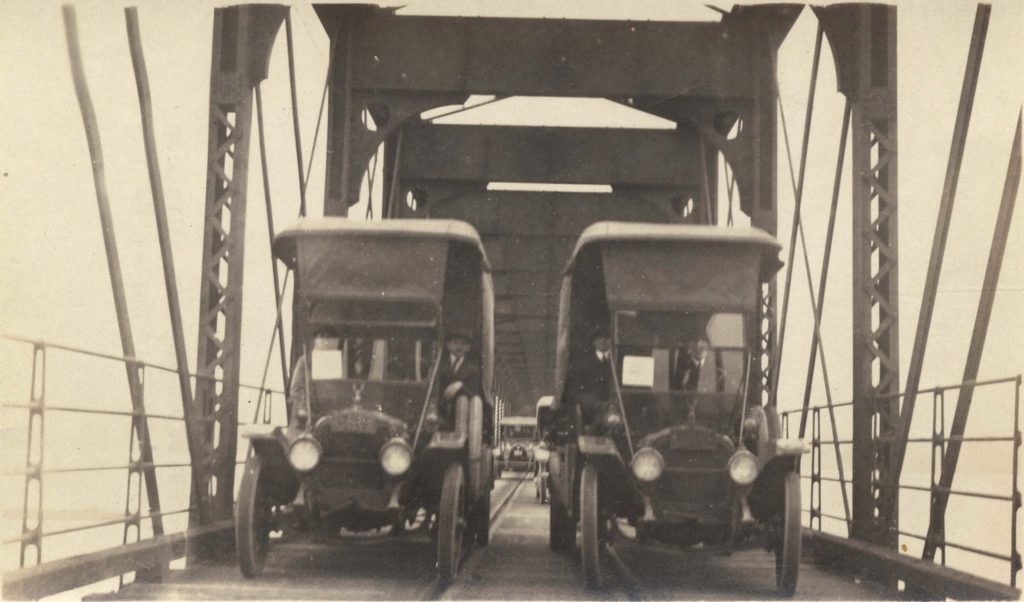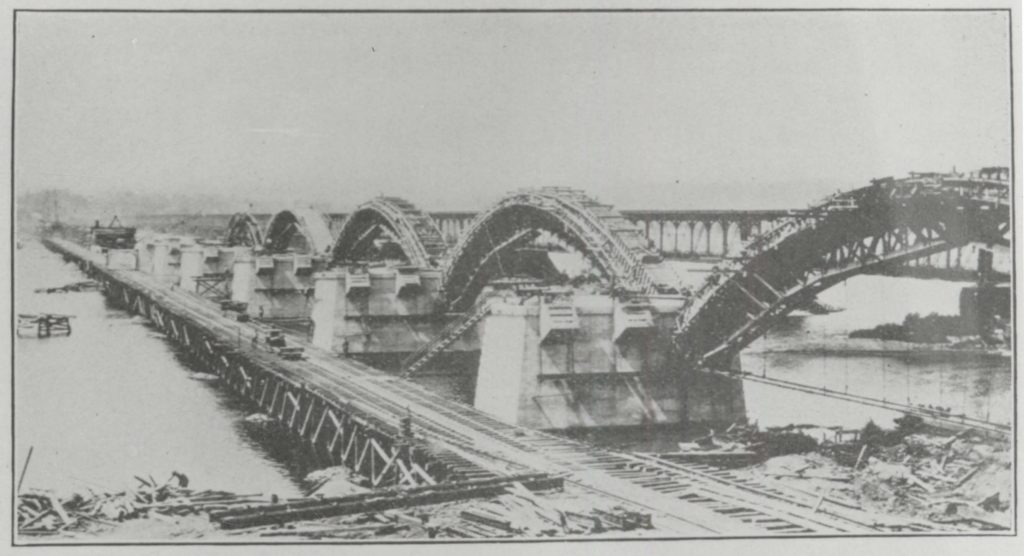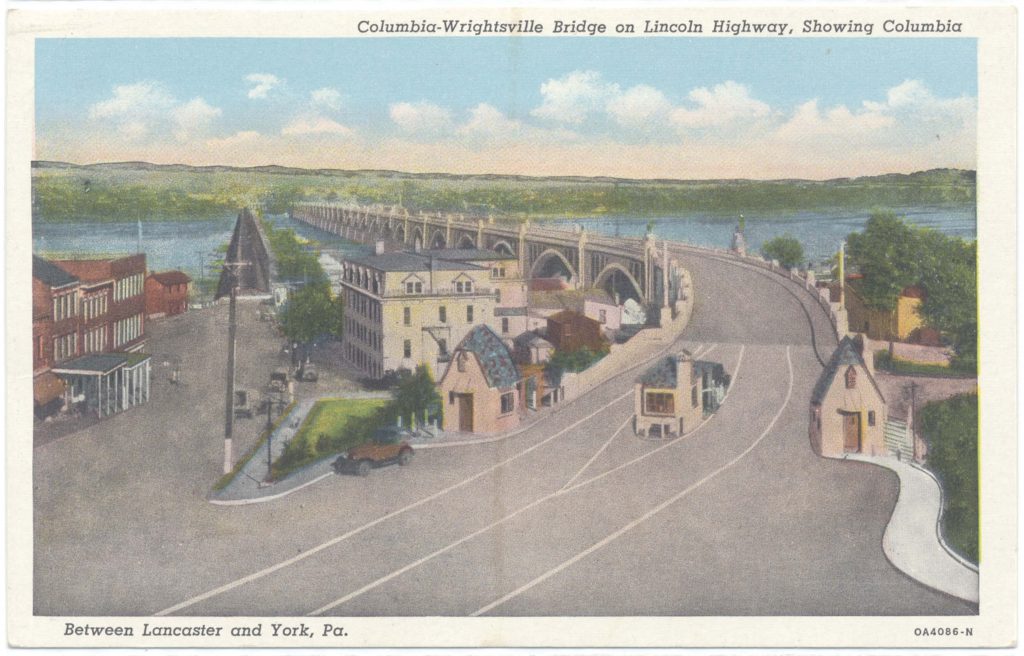RiverRoots: Bridging the Susquehanna
RiverRoots: Bridging the Susquehanna
River Roots is Susquehanna NHA’s blog series featuring history from York and Lancaster Counties that showcases the Susquehanna River’s historic, cultural, and natural resources contributions to our nation’s heritage.
For so many visitors to the Susquehanna National Heritage Area, the bridges across the river at Columbia are of great interest. The two bridges that still stand are important cross county transportation connectors. The piers that sit just north of the Veterans Memorial Bridge held three of the Susquehanna’s six bridges. Construction methods, materials, and the needs of each bridge changed from generation to generation.
In the early 1800s, it was common for over 150 wagons to descend upon Columbia, Pennsylvania, sitting and awaiting their turn to be ferried across the Susquehanna. A bridge connecting York and Lancaster County at Columbia was seen as an essential infrastructure improvement, vital to expansion into central Pennsylvania. Without a bridge, residents would be forced to resort back to a seasonal ferry for transportation. The only other bridges along the Lower Susquehanna were miles away at Harrisburg and Port Deposit, Maryland, both of which were opened in 1817. Six bridges have connected our region at Columbia: Two were destroyed by mother nature, two more destroyed by man, and two remain standing.
The first three bridges to span across the Susquehanna at Columbia and Wrightsville were constructed with wood because it was readily available. These wooden bridges were given roofs to prevent rot from weather. Theodore Burr improved upon covered bridges through his Burr Arch Truss design, which created more stability and strength. He was commissioned to design and oversee construction of Columbia’s first bridge across the Susquehanna. Burr designed five bridges along the Susquehanna between Port Deposit and Northumberland.

First Bridge (1814 to 1832)
Style: Wooden Covered Bridge
Constructed: 1812-1814
Cost: $231,771 financed by the Columbia Bank and Bridge Company
Length: 5,600 feet long on 53 stone piers
Location:1/4 mile north of Route 462 bridge
Thick ice hardened in the winter of 1832. A spring thaw came quickly in February causing ice to break up and flow down the river. The ice jammed up south of Columbia creating a natural dam. Water and ice rose up and lifted the bridge off the piers.
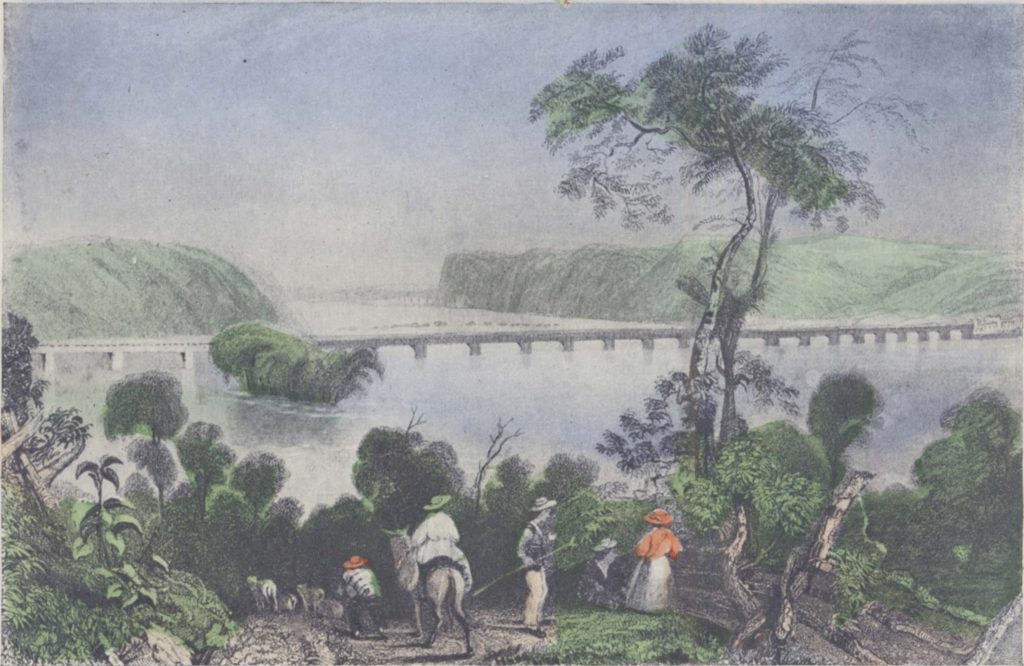
Second Bridge (1834 to 1863)
Style: Wooden Covered Bridge
Constructed: 1832-1834
Cost: $157,300 financed by the Columbia Bank and Bridge Company
Length: 5,620 feet long on 27 piers
Location: Just north of Route 462 Bridge on the piers that still stand
Along the outside, two tow paths for moving canal boats were added in 1840. A double railroad track was added in 1850. This bridge was burned in June, 1863 to prevent Confederate troops from crossing the Susquehanna River. We will feature that event in another RiverRoots blog.
Improved Bridges
The expansion and development of railroad transport caused the need for better, stronger bridges. This need led to a change in materials from wood to metal, primarily iron then steel. Development of truss design and readily available wrought iron and steel grew the popularity of truss bridges by the 1870s. The third and fourth Columbia-Wrightsville bridges used open truss design.

The third was primarily a wooden covered bridge but had two spans of iron Howe trusses. These spans were meant to be fire-resistant.The fourth bridge constructed by the Pennsylvania Railroad was made of 200 foot-long, pre-fabricated Pratt trusses. Pratt trusses were as strong as Howe trusses but used lighter, less expensive steel.
Third Bridge (1869 to 1896)
Style: Wooden Covered Bridge with two Iron Truss Spans
Constructed: 1868-1869
Cost: $400,000 financed by the Columbia Bridge Company
Length: 5,390 feet long
Location: same as second bridge
In September 1896, the Cedar Keys Hurricane which devastated much of the East Coast hit Columbia. It was so powerful that it swept the bridge from the piers. Some pieces landed near iron furnaces south of Marietta.
Fourth Bridge (1897 to 1963)
Style: Steel Pratt Truss Bridge
Constructed: Less than a month in 1896
Cost: $455,000 by Pennsylvania Railroad
Length: 5,300 feet long
Location: same as second bridge
Early designs of this bridge called for two decks: lower for rail traffic and upper for all other traffic. It was never added despite regular traffic jams when trains came through. When rail cars stopped traveling between York and Lancaster in 1958, the bridge was closed. It was dismantled in 1962.
Concrete Bridges
Arch bridges have existed since 1300 BC but masonry bridge construction was more labor intensive than truss bridges. The advent of modern concrete at the turn of the twentieth century created a renaissance of arch bridge construction.
Construction of the Columbia-Wrightsville Bridge in 1929-1930 created the longest multi-span concrete arch bridge in the world at the time. It has 27 river piers and 22 approach piers, spanning a total of 1.26 miles.
Another bridge made of reinforced concrete and steel on 45 piers was constructed to relocate Route 30 highway in the mid-20th century.
Fifth Bridge (1930 to Present)
Veterans Memorial Bridge
Style: Reinforced Concrete Arch Bridge
Constructed: June 1929 – September 1930
Cost: $2,484,000
Length: 6,657 feet long
Location: just south of the fourth bridge
Contractors finished this bridge 140 days ahead of schedule. Their contract gave a $400 bonus for every day the project was finished ahead of schedule. When it was opened vehicular traffic on the fourth bridge stopped. Tolls were charged to cross until 1943, when construction debt was paid off.
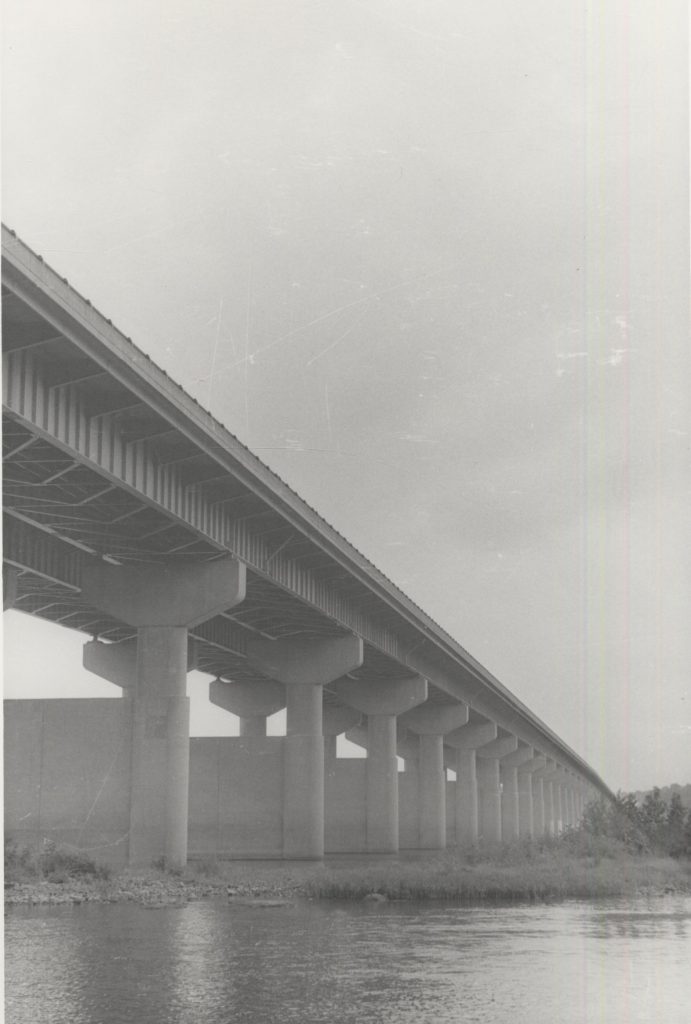
Sixth Bridge (1972 to Present)
Wright’s Ferry Bridge
Style: Reinforced Steel and Concrete
Constructed: 1969-1972
Cost: $12,000,000
Length: 5,643 feet long
Location: 100 yards north of the first bridge
Route 30 first ran through Wrightsville and Columbia across the Veterans Memorial Bridge but was diverted to this bridge. At 87 feet wide, it has four lanes. In 1975, it was officially named the Wright’s Ferry Bridge.

